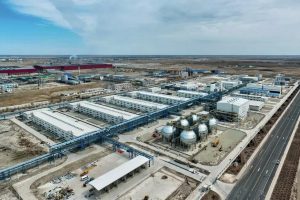
Jilin Electric Power commissions green ammonia plant
Jilin Electric Power says that it has commissioned one of the world’s largest green hydrogen and ammonia plants in Jilin Province. Jilin says that this is the world’s largest operating green ammonia plant, with a capacity of up to 32,000 t/a of green hydrogen and 180,000 t/a of green ammonia; the largest combined PEM and alkaline electrolyser system, combining 196 MW of alkaline electrolysis and 52 MW of PEM electrolysis, respectively; and the world’s largest block of solid-state hydrogen storage - 48,000 Nm3. The plant is fed by 800 MW of installed renewable power. The green ammonia is EU-certified under low-carbon fuel standards, and offtake agreements are in place with companies located in Europe, Japan and South Korea.





